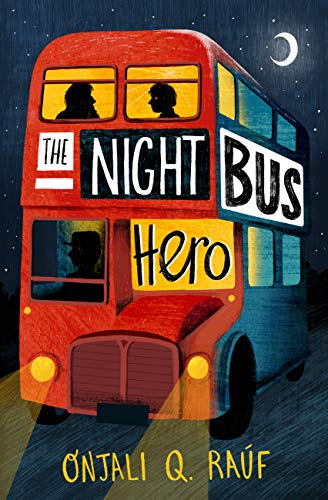The Night Bus Hero
The Night Bus Hero by Onjali Q. Rauf
Getting in trouble is what Hector does best. He knows that not much is expected of him. In fact, he gets some of his most brilliant prank ideas while sitting in detention.
But how far is too far? When Hector plays a prank on a homeless man and is seen and shamed by a schoolmate, he reaches a turning point. He wants to be viewed differently and decides to do something that will change his fate for the better. But will anyone take him seriously?
Main Focus: Punctuation – Chapter 1
Inform your class that they need to read chapter 1 of ‘The Night Bus Hero’. Using the worksheets differentiated out in 5 different ways, your class will add the correct punctuation into the sentences. This resource focuses on capital letters, commas, exclamation marks, question marks, inverted commas, apostrophes and full stops.
Answers included.
Unlock ResourceMain Focus: Comprehension – Ch 2 and 3
This comprehension is based on chapters 2 and 3 of ‘The Night Bus Hero’ and is aimed at Lower Key Stage 2, Year 3 and Year 4 classes.
There is a range of questions linked to the chapters to encourage your class to reflect on the information within chapters 2 and 3 of the book. The worksheet ends with a small section of creative writing.
This worksheet is differentiated in 3 ways and answers are provided.
Unlock ResourceMain Focus: Finding Evidence - Chapter 4
This exercise is based on chapter 4 0f “The Night Bus Hero”.
In this literacy activity, your LKS2 class will have to find evidence from the text to support the statements given.
This activity is differentiated 4 ways. Answers included.
Unlock ResourceMin Focus: Inverted Commas – Ch 8
The focus of this activity is punctuation and more specifically, inverted commas. Your class are challenged to find the inverted commas in the passages or adding them in to the appropriate sections of the sentences.
This resource has been differentiated 5 ways. Answers are included.
Unlock ResourceMain Focus: Nouns – Chapter 13
An extract has been taken from chapter 13 of ‘The Night Bus Hero’ for this resource.
This ‘part of speech’ activity encourages your class to identify ‘Proper Nouns’ and ‘Common Nouns’ by highlighting words and using different colours for each distinct type of noun in the passage.
This resource has been differentiated 5 ways.
Unlock ResourceMain Focus: Synonyms - Chapter 17
Synonyms are words which have the same or similar meanings. This resource teaches your class how to make their writing more interesting.
They have to read the extract below and fill the gaps with a synonym to replace each word in brackets.
This resource is split in 3 different ways.
Main Focus: Reflection
Your class will have to answer the questions to reflect on the events in the entire story once they’ve finished the book. The questions will help them to reflect on what they have read.
This resource is split into 3 different types.
Main Focus: Sequencing (All chapters)
After having read the book, your class are challenge to recall some of the main events in the story. They must number the statements provided into chronological order.
This resource is differentiated 3 ways. Answers are provided.
Main Focus: Who said it? Chapters 14-21
All of the sentences in this activity provided were spoken by characters in chapters 14 – 21. Your class will have to identify who said each statement.
This activity is split 3 ways. Answers included.
Main Focus: Challenge
Your class will read the clues and write their answers in the spaces.
When they’re finished, the letters in the shaded column will spell out a message!
Answers provided.
Main Focus: Syllables/Haiku
Haiku is a traditional form of Japanese poetry. Haiku poems have three lines and do not usually rhyme. The first and last lines of a Haiku poem contain 5 syllables and the middle line contains 7 syllables.
Your class will count the syllables in each line of the haiku poem and see whether they were written correctly.
This resource is differentiated 4 ways.
















































